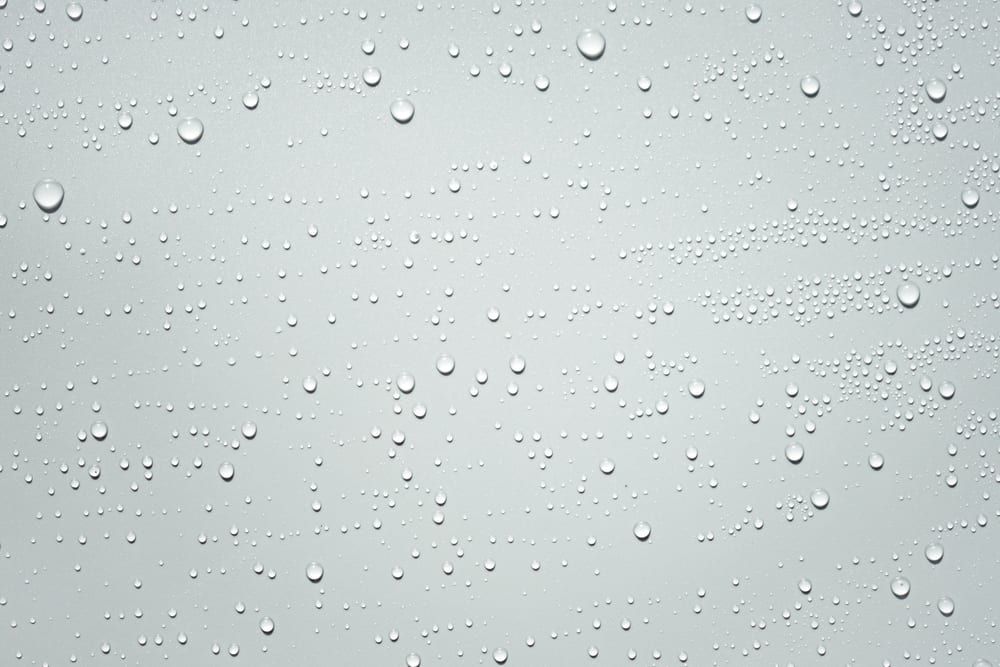This post may contain affiliate links, which means that we get commissions for purchases made through such links, at no additional cost to you. As an Amazon Associate we earn from qualifying purchases.
In this article, we will talk about whether direct thermal labels are waterproof or not. Our team has have done in-depth research on this subject matter. In this post, we want to share everything we found out with you.
Are direct thermal labels waterproof? Paper labels are not waterproof while synthetic labels are. Just like all paper materials, direct thermal papers cannot resist water. Direct thermal films, on the other hand, are synthetic media made of plastic material. As such, like other plastic materials, they are water-proof.
If you’re printing a direct thermal label for outdoor application or one that will be exposed to water and wet conditions, you should use direct thermal printable films (DTP Films) instead of direct thermal papers.

What Are Waterproof Direct Thermal Labels?
Direct Thermal Printable Films, called DTP films for short, are a variety of direct thermal labels with waterproof properties. They are made of a synthetic (plastic-based) substrate layer. DTP films are more expensive than thermal papers but they are ideal still for waterproof applications. They are also more durable and offer abrasion-, and chemical-resistance.
Direct thermal labels often have a substrate layer (the material to print on) and a dye layer (the layer with the pigment that creates the image). The dye layer is usually the same for both thermal papers and DTP films. The substrate layer is where they differ. While direct thermal papers are made with paper substrate, DTP films are made with plastic-based substrate.
Aside from the dye layer and the substrate layers, some manufacturers add a top-coat layer to their labels. This layer also offers some measure of water-resistance to the labels and make them more durable. But it doesn’t make them water-proof.
Different Types of Waterproof Direct Thermal Labels
DTP films can be made from polyester, polyethylene, polyimide, polypropylene, and vinyl. These different types of plastic substrates define the different types of waterproof direct thermal rolls. But they all share one thing in common. They are waterproof, chemical-resistant, and damage-resilient.
The common types of plastic face stocks used for making waterproof direct thermal labels include the following:
Polyester
Polyester labels rolls are long-lasting and durable because they can resist scratches and tears. They are also waterproof and can withstand tough conditions, but they are more suitable for indoor applications. High-grade polyester is resistant to harsh chemicals, so you can use them in laboratories that work with tough solvents and chemicals.
Polyethylene
Polyethylene rolls are mostly used for bottle labeling and curved surface applications because they are very pliant and malleable. Polyethylene is also recyclable, and so are polyethylene labels. This property makes them good for the environment. Polyethylene is the cheapest option for making professional labels.
Polyimide
This is a heat-resistant film, which is rare to find among direct thermal labels. They can also withstand aggressive chemicals. You can use them for applications that would be under high-temperature exposure.
Polypropylene
These rolls are the most common direct thermal plastic films on the market. They are cheap but are most suitable for short-term applications. But there are some sophisticated options for high-end applications where archiving is a concern. Lots of people use BOPP (biaxially-oriented polypropylene), a type of polypropylene film because it is versatile and rugged. BOPP labels last long even under exposure to cool and humid conditions.
Vinyl
The hallmarks of the vinyl film are its durability and flexibility. They have excellent chemical-, tear-, and moisture-resistance. You can use them for diverse outdoor applications.
What Can You Do With DTP Films?
You can use DTP films for general labeling and tagging applications that don’t require elaborate printing. They are ideal for outdoor applications that will be exposed to water. You can also use them for printing critical information, such as barcodes, that may be exposed to wet conditions.
Some of the common applications of waterproof direct thermal labels are as follows:
- Baggage tags at the airport
- Courier labels
- Ready-made food labeling
- Retail price tags
- Industrial barcode applications
- Meat and fruit labels
- Logistics labels
- Poultry and seafood applications
If you run a business that needs any of these applications, you should consider using DTP films instead of direct thermal papers.
Advantages of Using DTP Films
DTP labels are resistant to oil, water, and plasticizers. They also have an outstanding finish and texture that produce a sharp image and a fine print. What’s more, they hardly tear and can withstand extreme conditions.
Generally, direct thermal printing makes label printing simpler and reduces warehouse requirements. When you use DTP films, you wouldn’t have to incur any additional expenses. You don’t need to buy other inventory items like ribbons, toners, or ink. The film is all you need for your printing initiatives.
Aside from these general benefits, here are some of the advantages of DTP films over direct thermal paper labels:
Outdoor Applications
You can use direct thermal papers for indoor applications because they are more economical but they can tear and can be damaged by water. DTP films, on the other hand, are tear-resistant and water-resistant among other advantages.
They Can Withstand Moisture and High Humidity
Moisture and high humidity causes bleeding and smudging on paper materials. But waterproof thermal rolls can hold up in moist and humid environments. They are ideal for applications where contact with rain, damp conditions, and other forms of liquids are inevitable.
Easy Printing
Plastic label stock works more easily in thermal printers because their surfaces are smoother than paper labels.
Non-plastic Waterproof Direct Thermal Labels
Laid paper is one types of non-plastic direct thermal papers with waterproof properties. Thermal papers with either varnish or laminate coating also have significant waterproof quality. But they may not be 100% waterproof like plastic films.
As you read on, we will explain each of these non-plastic waterproof direct thermal labels in more detail.
Laid Paper
Laid Solar Paper is not made of plastic but it is waterproof and can hold up in cold and wet conditions because of its ribbed (mesh) texture. It is not 100% water-resistant but it has enough resistance to survive damage when submerged in a bucket of ice. This is the material most winemakers use on their wine bottles because it wouldn’t smudge when you chill the bottle of wine.
Thermal Paper with Varnish Coating
Varnishes are a form of low-degree protection that you can add to thermal papers to make them waterproof and UV-resistant. People use them widely because they are relatively cheap, flexible, and easy to apply. You can add varnish coating to specific spots on your label or to the entire label sheet.
✅ Video – How to enhance your labels with glossy varnish (Spot Varnish vs Screen Printing)
If you are a graphic designer and you need inspiration for making waterproof labels, this video is for you. Stefano Artuffo, an expert in label printing and designing, shares his wealth of knowledge about varnish coating in this video. He also explains the differences between spot varnish and screen printing, as well as how to choose between the two effects.
Thermal Paper with Laminate Coating
You can apply laminates to your direct thermal label to offer some protection from water damage. However, you can only apply laminates to the entire label sheet. Unlike varnishes, you cannot apply laminates to specific spots on your la
You can apply laminates to both sides of your label if you so desire. This would make your label virtually waterproof. Laminates are also resistant to scuffing, scratching, and tearing. They are available in matte, gloss, or satin finishes.
There are two methods of applying laminates: the wet method and the thermal method. The wet method uses water, solvents, or both. The thermal method, on the other hand, uses heat to stick the paper and laminate film together. Be sure that your thermal paper can withstand heat before you use the thermal method; else your entire label might turn black due to excess heat.
Related Questions
How Do Direct Thermal Labels Work?
Direct Thermal labels work heat application (or thermal) mechanism. When the printhead of a thermal printer applies heat to the label, it activates the dye pigments in it and creates imprints. Direct thermal papers contain latent ink pigments that heat activates at selective points to create the desired print.
Direct thermal labels have a layer of chemical and dye pigments. Heat activates the chemical, called developer. The developer, in turn, reacts with the dye pigments and activates them. Wherever activation occurs the label would turn dark, thus creating the image.
Do Thermal Printers Run Out of Ink?
Thermal printers are inkless so they never run out of ink. They keep on printing so long as there are labels stocks available and the printhead is still in good condition.
Thermal printers use heat to create texts and images on paper. This means you don’t have to spend on other inventories like printing ribbons and ink cartridges. This would help cut your operational cost. More so, printing becomes easier because you don’t have to monitor ink levels.
What Is Better Direct Thermal or Thermal Transfer?
Thermal transfer labels typically last longer than direct thermal labels. They are also more resistant to moisture, UV light, and abrasion. However, direct thermal labels are cheaper and do not require ribbons.
Direct thermal printing is good if you are producing short-term application labels. But if you are printing a document that you’ll need to archive for future reference, thermal transfer printing would be your best bet.
Conclusion
Direct thermal labels could be waterproof if they are made of synthetic media or if you add varnish or laminate finishing to it. Laid paper labels also offer some sort of water resistance. Waterproof labels are usually more durable and last longer than labels that have no water resistance. However, you can still use direct thermal labels that have no waterproof quality if water-resistance is not required for your application.
